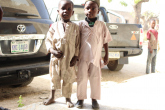
Good news on HIV/AIDS in Africa is scarce so when there is not one but two exciting reports on the prevention and treatment of the disease it’s notable and cause for optimism.
In 2013 the United Nations program on HIV/AIDS developed a set of goals titled 90-90-90 Initiative, which aims that worldwide by 2020:
- 90% of people who have HIV infection will be diagnosed
- 90% of people diagnosed will be receiving antiretroviral treatment
- 90% of people being treated will have viral suppression (the virus is at an undetectable level in the blood and cannot be transmitted to others)
The idea is that if there is an early diagnosis of everyone with HIV and treatment is started, they become virally suppressed, can have a full life, and can no longer transmit the infection to others. The spread of HIV/AIDS will be slowed and eventually halted.

HIV/AIDS 2017 statistics
The latest figures as of June 2017 show that of the 36.7 million HIV-positive people worldwide, only a little more than half (20.9 million) are receiving antiretroviral therapy (ART) for treatment.
Of those living with HIV, 70% live in Africa, and just over half (53%) have access to antiretroviral drugs. Less than half (43%) of children 0 – 14 years with HIV have access to treatment. Only three-quarters (76%) of all pregnant women with HIV are receiving treatment to prevent them from passing the virus to their babies
Why is there inadequate access to HIV treatment?
HIV infection occurs in urban as well as remote rural areas of Africa. Only people who test positive get treated and treatment must continue for life to keep the virus suppressed, as there is no cure for HIV/AIDS at present.
Providing universal HIV testing and treating as recommended by the United Nations means reaching even the most remote locations. Testing and then ensuring a steady supply of drugs for the lifetime of everyone who tests positive for HIV is beyond the budgetary and manpower resources of most nations in Sub-Saharan Africa.
GOOD NEWS: Breakthrough HIV treatment pricing
The first bit of good news came in September 2017. A breakthrough pricing agreement is in place between several international agencies, the South African and Kenyan governments and two pharmaceutical companies.
At a cost of US$75 per person, per year the agreement will speed the availability of the first affordable, single-pill HIV treatment to low- and middle-income countries by April 2018. Current HIV treatment in Africa costs more, has a lot of side effects and for that reason high patient drop out rate.
The new combination medication is recommended by the WHO and contains dolutegravir (DTG) a highly effective antiretroviral drug used widely in developed countries.
- It has fewer side effects, and so patients continue to take it as directed
- Limits the development of drug resistance
- Reduces the use of more expensive second and third line drugs
For African nations struggling to halt the ravage of HIV/AIDS across the continent, this new drug could be a game changer. It will go a long way to drawing us closer to the UNAIDS lofty 90-90-90 Initiative goals.

GOOD NEWS: HIV Prevention methods work even in Africa
The second piece of good news was a report on Nov 29, 2017, of a research study in Rakai District, Uganda that showed a jaw-dropping 42% reduction in HIV infections by using a combination of proven HIV prevention methods.
Over a seven-year period, nearly 34,000 people in 30 communities participated in the Rakai Community Cohort Study. The HIV prevention methods used included:
- Voluntary male circumcision (male circumcision is not a cultural practice in Rakai)
- Use of HIV-suppressing antiretroviral treatment in HIV-positive community members
- Change in sexual behavior such as delayed age of first sexual encounter, limiting number of sexual partners
The drop in HIV infection rates in the district is attributed to the use of the prevention methods over a prolonged period. There was also an increase in the proportion of HIV-positive community members receiving treatment who had viral suppression – from less than half (42%) in 2009 to nearly three-quarters (73%) in 2016.
This study confirms that even in resource-poor nations, using a combination of proven prevention methods consistently across communities is the best way to battle HIV/AIDS.
What you can do
If you don’t know your HIV status, get tested. The sooner you know, the sooner you can start antiretroviral treatment. If you’re HIV-positive, begin immediate treatment and stay on it. Practice safe sex – use a condom and limit the number of sexual partners
You could save lives – yours and many more.

